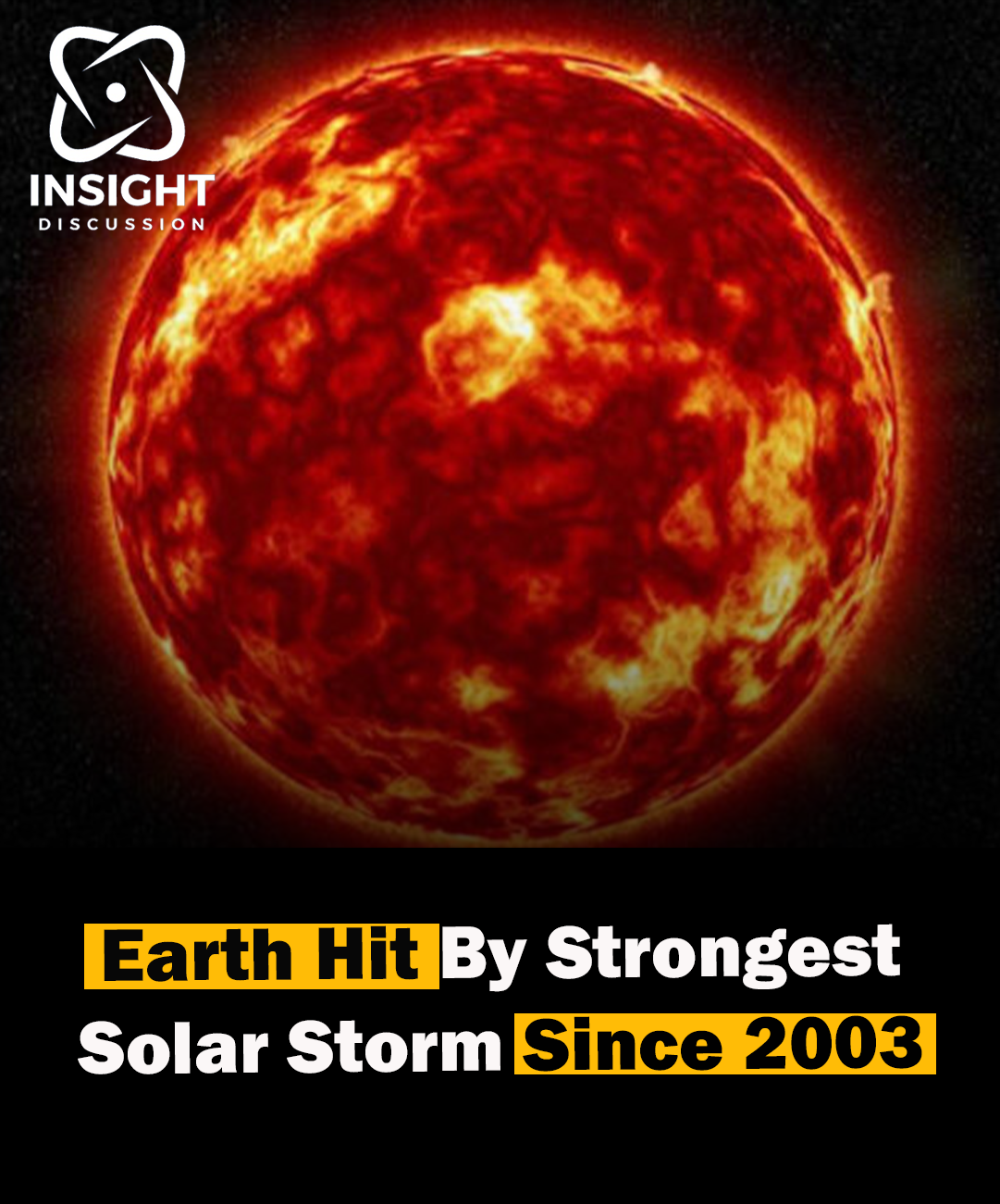In a dramatic celestial event, Earth found itself under siege from the powerful forces of our sun, as a formidable solar storm unleashed its fury upon our planet. This tempest from the heavens, marked by multiple coronal mass ejections (CMEs), heralded the strongest solar activity witnessed in over two decades, casting a brilliant display of auroras across the skies from northern Europe to Australasia. While captivating social media with stunning images of shimmering lights dancing in the night, this celestial spectacle also raised concerns among authorities and experts, prompting warnings of potential disruptions to satellites, power grids, and critical infrastructure.
The genesis of this solar storm lies in the turbulent depths of our sun, where immense magnetic activity gives rise to colossal eruptions of plasma and charged particles. Known as coronal mass ejections (CMEs), these eruptions can travel across the vast expanse of space, hurtling towards Earth at astonishing speeds. When these charged particles interact with our planet’s magnetic field, they produce the dazzling auroras that captivate observers with their ethereal beauty. However, the same electromagnetic forces that give rise to these celestial light shows also pose a threat to our technological infrastructure, as the influx of charged particles can interfere with satellite communications, disrupt power grids, and even pose risks to astronauts in space.
As news of the solar storm spread, authorities around the world sprang into action, issuing warnings and advisories to mitigate potential risks and ensure the safety of critical infrastructure. With satellites playing an increasingly integral role in telecommunications, navigation, and weather forecasting, the prospect of disruptions caused by solar activity is a cause for serious concern. In addition to the potential for communication blackouts and disruptions to GPS services, there are also risks of damage to sensitive electronic equipment on satellites, which could impact everything from internet connectivity to emergency response systems.
Moreover, the threat of solar-induced power outages looms large, as the influx of charged particles from the sun can induce electrical currents in power lines and transformers, potentially leading to widespread blackouts. In regions where power grids are particularly vulnerable to geomagnetic disturbances, such as high-latitude areas near the poles, the risk of cascading failures and long-term damage to infrastructure is especially pronounced. Recognizing these risks, experts have advised utilities to implement backup plans and precautionary measures to minimize the impact of solar storms on the reliability of electrical power supply.
In addition to its potential effects on technology and infrastructure, the solar storm also presents unique opportunities for scientific research and observation. By studying the behavior of solar storms and their impact on Earth’s magnetosphere, scientists can gain valuable insights into the dynamics of our planet’s interactions with the sun. From tracking the propagation of CMEs through space to monitoring the effects of geomagnetic disturbances on Earth’s atmosphere, researchers are continuously expanding our understanding of the complex relationship between the sun and our planet.
For amateur astronomers and skywatchers alike, the solar storm offers a rare chance to witness the beauty of nature’s light show in all its splendor. From the shimmering curtains of green and purple that grace the skies of the Arctic Circle to the vibrant hues of red and orange that illuminate the night in more temperate latitudes, the auroras produced by solar storms are a testament to the awe-inspiring power of the cosmos. With social media ablaze with images and videos of these celestial displays, the solar storm has sparked a sense of wonder and curiosity among people around the world, reminding us of the profound connection between Earth and the wider universe.
As the solar storm continues to unfold, scientists, authorities, and observers alike remain vigilant, monitoring its progress and assessing its potential impacts on our planet. While the beauty of the auroras may captivate our imagination, it is important to remember the potential risks posed by solar storms and take appropriate precautions to safeguard our technology, infrastructure, and way of life. In the face of nature’s awesome power, it is only through careful planning, coordination, and scientific understanding that we can navigate the challenges posed by solar activity and ensure a safer, more resilient future for all.

